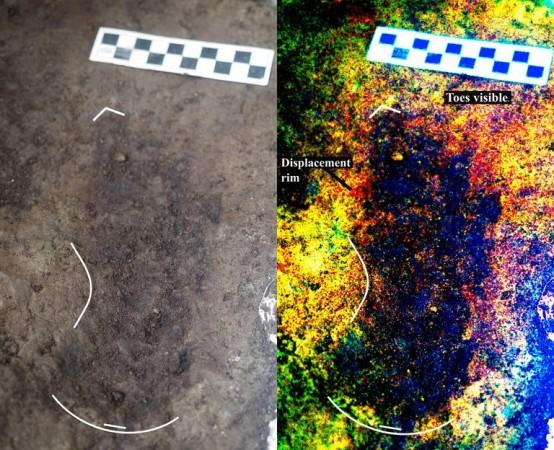
Archaeologists have unearthed 13,000-year-old human footprints off the Pacific coast of Canada, that are believed to be the oldest known human track marks in North America. It shows that humans walked on the west coast of Canada in the ice age.
According to a new study published in the journal PLOS ONE in March, all the 29 clay footprints, which were discovered at the shoreline Calvert Island in British Columbia, belonged to two adults and a child.
Researchers made this significant finding on Calvert Island, located off the western coast of British Columbia, which is about 62 miles (100 kilometers) north of Vancouver Island.
Lead author of the study Duncan McLaren, an anthropologist at the Hakai Institute and the University of Victoria in Canada, wrote in the paper, "In addition to the 29 individual footprints, we found evidence of other partial footprint-like depressions, but over-trampling had rendered them only barely discernible. For this reason, many could not be recorded in detail or with confidence and are not included in the total number of tracks discovered."
McLaren and his colleagues are said to have discovered the first footprint in 2014 while digging for sediments beneath Calvert Island's beach sands.
"As this island would only have been accessible by watercraft 13,000 years ago," McLaren told The New York Times. "It implies that the people who left the footprints were seafarers who used boats to get around, gather and hunt for food and live and explore the islands."
Do these footprints provide any insights?
McLaren was quoted as saying by The New York Times report, "This provides evidence that people were inhabiting the region at the end of the last ice age. It is possible that the coast was one of the means by which people entered the Americas at that time."
Michael Petraglia, an archaeologist from the Max Planck Institute for the Science of Human History in Germany, who is not involved in the research, told The New York Times, "It's not only the footprints themselves that are spectacular and so rare in archaeological context, but also the age of the site. It suggests an early entrance into the Americas."
Previously, several artifacts from the Pleistocene Epoch were discovered in different places in Canada like Charlie Lake Cave in British Columbia, Vermillion Lakes in Alberta. But evidence of human footprints from the last ice age is quite rare and new. Pleistocene Epoch or the last ice age started about two-and-a-half-million-years ago.









!['Had denied Housefull franchise as they wanted me to wear a bikini': Tia Bajpai on turning down bold scripts [Exclusive]](https://data1.ibtimes.co.in/en/full/806605/had-denied-housefull-franchise-they-wanted-me-wear-bikini-tia-bajpai-turning-down-bold.png?w=220&h=138)



